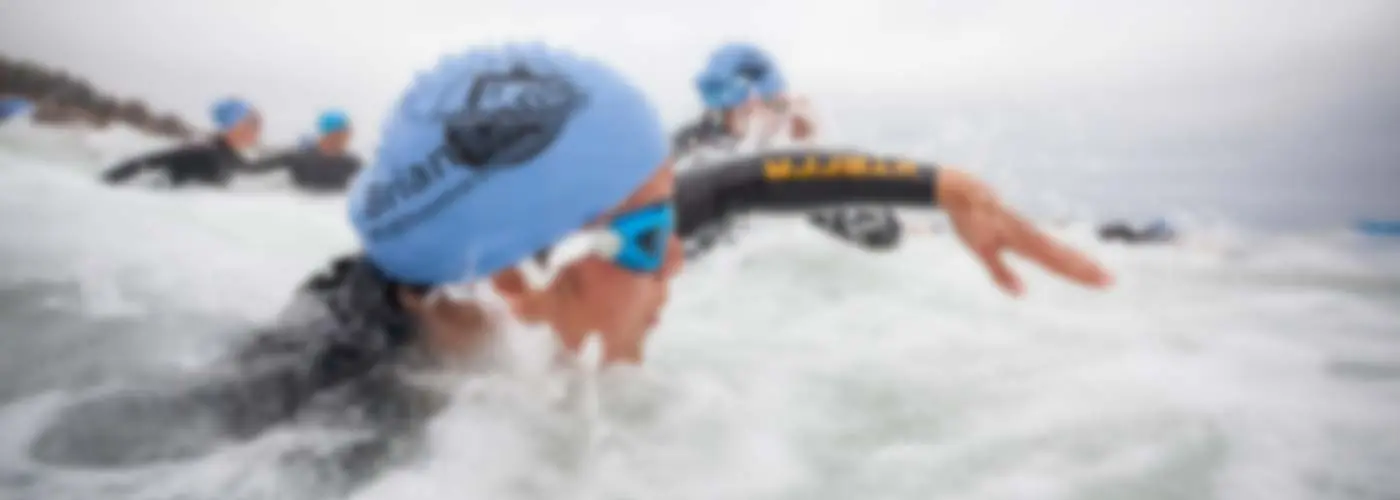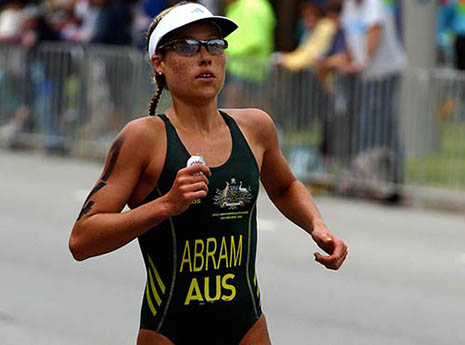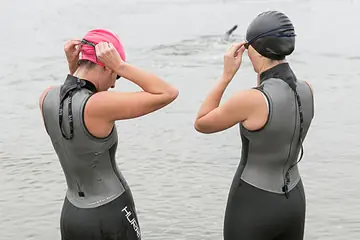People hold on to strategies they think will give them a leg up on health and fitness, even if it means serious caloric or nutrient restriction. Unfortunately, this "less is best" mentality can produce adverse effects, including prolonged sickness, injury, stress fractures and not reaching your race or fitness goals.
We spoke with Marni Sumbal, MS, RD, CSSD, LD/N, owner of Trimarni Coaching and Nutrition and 12-time IRONMAN about the dangers of falling prey to the many myths of health and sports performance nutrition.
We discussed many of the hot nutrition topics surrounding endurance athletes today. We've certainly become a culture of extremes, but as Sumbal explains, most often you'll find the solution is somewhere in the middle.
No. 1: It's Best to Become Fat-Adapted to Lose Weight and Perform Better
1 of 8
That concept sounds great, right? Burn fat as fuel, lose tons of weight and race better! The body, as you may have guessed, is more nuanced than that. Yes, fat can be used as fuel, particularly on longer and lower-intensity sessions, but as Sumbal stresses, "To become truly fat-adapted, where fat becomes your primary fuel source during training and racing, your body must get in a state of ketosis by severely restricting carbohydrate intake and consuming at least 70 percent of your daily calories from fat." This can be difficult to achieve and sustain, and favorable results may be hard to achieve, especially for women.
In ketosis, your liver creates ketones because it no longer has glycogen, Sumbal explains. Ketones can cross the blood/brain barrier and provide fuel to the brain; however, when you pick up the volume and intensity of a workout, it's beneficial from a performance and health standpoint to keep your muscle and liver stores packed with glycogen and not ketones.
"We know if you do higher intensity sessions, you improve your endurance and strength and increase your rate of resting metabolism," Sumbal says. "These sessions are key to becoming fitter and faster. However, the body will struggle at high-intensities on a ketogenic diet."
The ketogenic diet, she notes, may offer quick weight loss for obese and overweight people, which may include some triathletes, especially when they're first getting into the sport. But it may be difficult to sustain the weight loss long-term. Avoid using this as a temporary way to lose weight.
Takeaway: To become a fitter and faster athlete, you need to do high intensity sessions that use glycogen as fuel and the ketogenic diet does not allow for this. Plus, at this time, there is no good scientific research that shows that the ketogenic diet is performance-enhancing in the long-term. Focus on improving your endurance and strength with a well-rounded training program.
Find:
Your Next TriathlonNo. 2: The Keto/Paleo/Vegan/Insert Diet Here is THE Healthiest Diet for an Athlete
2 of 8
If you look at most elite level or even Olympic athletes, they're not adhering to one specific diet plan. If they are, they're looking for those very marginal gains—that 1 percent to get a leg up on their competition.
Is there a "best" diet out there? "No," Sumbal says. "But there are components that make up a great diet for everyone." She advocates a well-rounded diet of eating real whole foods (with the emphasis on real and whole), including lots of fruits and vegetables. She also stresses the importance of developing a healthy relationship with carbohydrates—so your consumption is not too high or too low—and incorporating quality protein and healthy fats to create well-rounded meals.
"Your carbohydrate consumption is the one macro that will change the most depending on where you are in your training cycle—whether you're in peak endurance training, offseason or doing intense workouts," Sumbal says. "Learn how to time your workouts with the appropriate nutrition to meet your energy needs so the body can adapt to the training, recover and still remain in good health throughout the day."
Takeaway: There is no one-size-fits-all diet or macronutrient (carbohydrate, protein and fat) distribution for all. A well-balanced meal with all of three macronutrients is vital to the health and longevity of an athlete. To hone in on what is right for you at any given period in your training, seek the assistance of a Registered Dietitian with sports nutrition experience. Endurance athletes' needs are vastly different than the general sedentary population.
Find:
Your Next TriathlonNo. 3: During Race Week, I Can Eat as Many Carbs as I Want
3 of 8
"More carbs doesn't mean more energy," Sumbal says. "We have a limit, and typically when athletes eat more carbs than they are used to, they tend to feel more lethargic and low in energy. This is the opposite of how you want to feel going into a big event." It's even more complicated if you are a low-carb or ketogenic athlete who then tries to carb load right before a race. That, too, can cause distress or bloating.
For events less than two hours: There's no need to carb-load at all, but you can increase your carbohydrate intake slightly. Think of things like an extra banana or half a bagel.
For events longer than two hours: About 48 to 72 hours prior to your event, gradually increase your carbohydrate intake in the morning hours so they don't feel heavy in the evening. After that first workout in the morning, feel free to have pancakes, french toast, oatmeal or granola. Then, ease back throughout the day with reasonable portions of low-fiber carbohydrates. "This tends to work better physically and mentally for athletes so they arrive to a race feeling light, fresh and energetic," Sumbal says.
Takeaway: You definitely want to make sure you have glycogen for race day, but traditional carb loading at an all-you-can-eat pasta bar is a thing of the past. Be sensible and smart when adding carbohydrates during race week. For longer-distance athletes (i.e. events longer than two hours), consider practicing your pre-race fueling in the 24 to 48 hours before your big workout.
Find:
Your Next TriathlonNo. 4: I Should Aim for Zero Water Weight Loss During Training
4 of 8
If you live and train in a warm climate, you've likely been told to drink plenty of water. Some coaches even require sweat tests before and after a workout. The idea of a sweat test is to weigh yourself prior to training and then again right after while keeping track of what you've had to drink. If you've lost weight during a workout, you're under-hydrated.
Is this harmful? Do you always want to try to aim for zero weight loss? It depends, Sumbal says.
If an athlete is doing a short workout or they're training once a day and not experiencing any signs of dehydration, such as chills, headache, dark urine or any sign of heat illness, it's OK to lose 1 to 2 percent of body weight because you're going to be able to replenish that before the next session.
Where it becomes an issue, Sumbal cautions, is when an athlete is doing multiple sessions a day or prolonged training sessions. "You don't want to go into the second workout of the day in a dehydrated state as your performance will be greatly diminished."
How do you minimize this? "Ingest some kind of sports drink or sodium with fluids during the morning session so you're replenishing what you're losing in the sweat," Sumbal says. "Then, also be proactive on a rehydration strategy so the second workout isn't a bust."
For those doing longer training sessions, hydration and electrolyte balance is also vital. You don't get the break in between sessions to replenish, so you have to stay on top of it. "As a triathlete, "you don't want to finish the bike in a dehydrated state, but it's OK to finish the run a little depleted because that's the end of the event," Sumbal says. After about 3 to 4 percent weight loss, your performance (and health) will decline drastically, and this is when serious issues can occur. Some athletes are more susceptible to performance and health issues at 1 to 2 percent loss of body weight whereas other athletes can still perform well at 2 to 3 percent loss. Know your body, and if something doesn't feel right, it's time to reassess your hydration protocol.
Takeaway: The more you train, the more you need to be an active participant in your hydration strategies. It's OK to lose 1 to 2 percent of body weight, but pay attention to any signs of dehydration you may experience throughout the day. For those training more, a hydration strategy is a must for success.
Find:
Your Next TriathlonNo. 5: You Can't Drink Too Much Water—Hydrate, Hydrate, Hydrate
5 of 8
It is possible to drink too much water, which is a potentially life-threatening situation called hyponatremia. "We can't hold water, so by drinking a copious amount before or during a workout, we just end up diluting our sodium stores and urinating the excess out," Sumbal says. Extremely low sodium levels in the blood could leave you in the hospital instead of at the finish line.
The subject of hydration is confusing because we're often told hydrate, hydrate, hydrate with total impunity, especially during the summer months.
Sumbal advocates a hydration protocol that you can adhere to as much as possible. "For example, on race morning I encourage my athletes to drink no more than 30 ounces of fluids in the 3 hours before an event," Sumbal says. That includes milk, coffee, sports drinks or whatever is part of their morning routine. You don't want to have too much fluid in your belly on race morning or you might end up urinating excessively.
It's also important to focus on what you're doing going into the race. "Make sure you are salting your food so your body holds on to the fluid and, during the race, add electrolytes as part of your hydration mix," she says.
The best way to avoid the danger zones of both hyponatremia, as well as dehydration, is to drink and fuel at regular intervals during your long training or race.
Takeaway: A good rule of thumb is to set a watch to beep every 10 minutes on the bike and take in 4 to 5 ounces of fluid. This way you're keeping your stores topped off but not overdoing it. On the run, Sumbal recommends an ounce or two every 8 to 10 minutes. This will delay fatigue, keep blood sugar high and help with gastric emptying.
Find:
Your Next TriathlonNo. 6: Fasted Workouts Will Help Burn More Fat and Lose Weight
6 of 8
The majority of fasted workouts are done first thing in the morning, so if an athlete eats mashed potatoes or a sandwich for dinner, for instance, then they have carbohydrates in their muscles, even though the liver is low in carbohydrates. Because carbohydrates are still present, most athletes will be perfectly fine for 60 to 75 minutes unless they are hypersensitive to low blood sugar.
Athletes training at a high intensity or more than 90 minutes in a fasted state will likely find the quality of the workout may be compromised. Therefore, this is not recommended.
Does a fasted workout help you burn more fat and lose weight? "That's hard to say," Sumbal says. "An athlete may train for 60 minutes in a fasted state in the morning but then sit at their desk all day or eat poorly the rest of the day to compensate." Therefore, it's hard to pinpoint the success of weight loss on a few fasted workouts.
This isn't to say fasted workouts don't have a place in endurance training. "It can be a great way to shake up your metabolism," Sumbal says. "But make sure it's only done before an easy workout and not during peak training or after hard training sessions. As long as it doesn't create added stress to the body or trigger overeating later in the day, training in a fasted state is fine to do on occasion if it works for you."
Takeaway: Don't make a daily habit of training in a fasted state. This can lead to hormonal stress and overeating later in the day. Plus, it's beneficial to train your gut to tolerate food before you work out so you are prepared for race day. By its nature, consistent endurance training (non-fasted) helps you become more efficient at burning fat as fuel, so the healthiest thing you can do as an athlete is become consistent and don't reach for short term fixes.
Find:
Your Next TriathlonNo. 7: Eating Post-Workout Undoes the Training You Just Did
7 of 8
We all love the feeling of accomplishment after a tough workout. We've challenged our body and hopefully it rose to the occasion. To some, eating after a workout may seem counterintuitive to the work they just did. Why put calories back in when you've worked so hard to burn them?
"Training adaptations happen in recovery," Sumbal says. "You did your workout, but all you did was damage your body. So if you want to keep you body in a damaged state, don't eat anything afterwards. However, if you want to recover, adapt and make positive changes, then recover properly with good nutrition within that 30- to 60-minute window."
In addition to training adaptations, post-workout fueling also creates good habits. It keeps athletes from overeating and using food as a reward. You maximize your daily energy levels because you avoid the exhaustion and mood swings that come from not eating enough food.
Takeaway: Create good post-workout fueling habits. This is the key to muscle repair and recovery. Some professionals recommend a 3 to 4:1 carb to protein ratio (think turkey sandwich, chocolate milk, hummus and pita, etc.), but it's perfectly fine to hit the 2:1 ratio such as 20g protein and 40g carbohydrates if that works better for you.







Discuss This Article